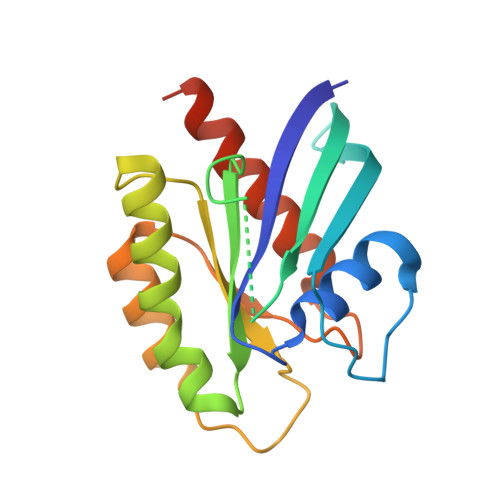Comparative analysis of KRAS4a and KRAS4b splice variants reveals distinctive structural and functional properties.
Whitley, M.J., Tran, T.H., Rigby, M., Yi, M., Dharmaiah, S., Waybright, T.J., Ramakrishnan, N., Perkins, S., Taylor, T., Messing, S., Esposito, D., Nissley, D.V., McCormick, F., Stephen, A.G., Turbyville, T., Cornilescu, G., Simanshu, D.K.(2024) Sci Adv 10: eadj4137-eadj4137
- PubMed: 38354232
- DOI: https://doi.org/10.1126/sciadv.adj4137
- Primary Citation of Related Structures:
8T71, 8T72, 8T73, 8T74, 8T75 - PubMed Abstract:
KRAS , the most frequently mutated oncogene in human cancer, produces two isoforms, KRAS4a and KRAS4b, through alternative splicing. These isoforms differ in exon 4, which encodes the final 15 residues of the G-domain and hypervariable regions (HVRs), vital for trafficking and membrane localization. While KRAS4b has been extensively studied, KRAS4a has been largely overlooked. Our multidisciplinary study compared the structural and functional characteristics of KRAS4a and KRAS4b, revealing distinct structural properties and thermal stability. Position 151 influences KRAS4a's thermal stability, while position 153 affects binding to RAF1 CRD protein. Nuclear magnetic resonance analysis identified localized structural differences near sequence variations and provided a solution-state conformational ensemble. Notably, KRAS4a exhibits substantial transcript abundance in bile ducts, liver, and stomach, with transcript levels approaching KRAS4b in the colon and rectum. Functional disparities were observed in full-length KRAS variants, highlighting the impact of HVR variations on interaction with trafficking proteins and downstream effectors like RAF and PI3K within cells.
- NCI RAS Initiative, Cancer Research Technology Program, Frederick National Laboratory for Cancer Research, Frederick, MD, USA.
Organizational Affiliation:


















